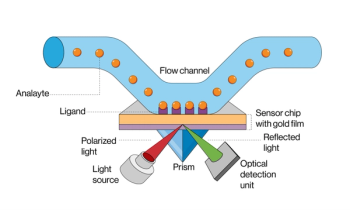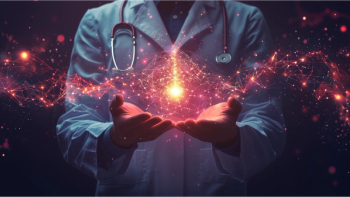Key Points
- AI models like MLIPs and GNNs greatly speed up vibrational spectrum simulations.
- Vibrational behavior is crucial for energy efficiency and climate-related applications.
- Quality training datasets are essential; synthetic data dominates current approaches.
- Transferability and extrapolation remain key challenges in AI-based spectroscopy.
Reimagining Atomic Vibrations Through AI
Understanding how atoms vibrate in molecules and solids is key to tackling global energy loss and advancing new materials, but doing so has long posed a challenge. Now, a multidisciplinary team of researchers from the Massachusetts Institute of Technology (MIT) and Oak Ridge National Laboratory (ORNL) reveals how artificial intelligence (AI) is revolutionizing this critical field (1).
In their comprehensive review published in Digital Discovery, authors Bowen Han, Ryotaro Okabe, Abhijatmedhi Chotrattanapituk, Mouyang Cheng, Mingda Li, and Yongqiang Cheng explore the growing power of AI to model, simulate, and predict vibrational behaviors of molecules and crystalline materials. Their work focuses on replacing expensive quantum mechanical simulations and resource-intensive spectroscopic experiments with machine learning (ML)-based approaches that achieve comparable, and often superior, results (1).
Why Vibrations Matter
More than 70% of the world’s energy is lost as waste heat, much of it due to the microscopic vibrations of atoms within solids and molecules. These atomic motions, known as phonons in solids and molecular vibrations in gases, play a central role in everything from climate change to semiconductor efficiency (1).
"Molecular vibrations like those in CO₂ absorb infrared radiation and worsen the greenhouse effect," the authors explained. "In solids, phonons determine how heat travels, and leaks, through materials." Precise spectroscopic measurement of these vibrational patterns is therefore essential to innovations in carbon capture, energy harvesting, and thermal insulation. However, traditional methods like density functional theory (DFT) simulations or inelastic neutron scattering are notoriously expensive and slow. That’s where AI steps in (1).
Accelerating Spectroscopy with AI
Central to the team's analysis is how AI-powered models, such as ML interatomic potentials (MLIPs) and graph neural networks (GNNs), can approximate the potential energy surfaces that govern atomic interactions. Trained on datasets from established sources like the Materials Project, JARVIS-DFT, and phonondb, these models bypass the need for intensive DFT computations (1).
By using synthetic and experimental databases, the researchers show that AI systems can predict vibrational spectra with remarkable speed and accuracy. AI models can simulate real-time vibrational behavior, replicate spectroscopic signatures (like infrared and Raman spectra), and even predict heat transport mechanisms from atomic structures (1).
"Instead of computing atomic forces from scratch," they wrote, "MLIPs learn to predict them directly from atomic configurations, cutting down computational costs by orders of magnitude" (1).
Bridging Theory and Experiment
The review also dives into the spectroscopic implications of these AI techniques. Vibrational spectroscopy, which includes infrared (IR), Raman, and inelastic neutron scattering (INS), has long been a cornerstone of materials science. Yet experimental data often lack consistency in resolution and background conditions, making direct AI training difficult (2–4).
To overcome this, researchers increasingly use hybrid approaches, combining synthetic (DFT-derived) data with selective experimental results. They also explore direct prediction of vibrational spectra—bypassing intermediate physics steps like force constant matrices—although this can sometimes reduce interpretability (1).
Challenges on the Horizon
Despite their promise, AI models face major hurdles in transferability and extrapolation. Models trained on one class of materials often struggle when applied to unfamiliar systems, such as organic molecules or exotic quantum materials. The review discusses advanced techniques like transfer learning, multi-task learning, and adversarial training to improve model robustness (1).
A further complication lies in avoiding overfitting and underfitting, particularly with small datasets (1–4). “Reliable vibrational spectra prediction still requires careful tuning of model complexity and data quality,” the authors caution (1–4).
A Future of Faster Discovery
The review concludes with optimism. With better datasets, smarter models, and continued interdisciplinary collaboration, AI could soon enable inverse design—the ability to engineer materials backward from their desired vibrational properties (1).
"This AI-driven framework offers transformative tools for both fundamental understanding and practical applications in energy, electronics, and environmental science," the team wrote (1).
References
(1) Han, B.; Okabe, R.; Chotrattanapituk, A.; Cheng, M.; Li, M.; Cheng, Y. AI-Powered Exploration of Molecular Vibrations, Phonons, and Spectroscopy. Digit. Discov. 2025, 4 (3), 584–624. DOI: 10.1039/D4DD00353E
(2) Workman, J., Jr.; Mark, H. From Classical Regression to AI and Beyond: The Chronicles of Calibration in Spectroscopy: Part I. Spectroscopy 2025, 40 (2). DOI: 10.56530/spectroscopy.pu3090t7
(3) Workman, J., Jr.; Mark, H. Artificial Intelligence in Analytical Spectroscopy, Part I: Basic Concepts and Discussion. Spectroscopy 2023, 38 (2), 13–22. DOI: 10.56530/spectroscopy.og4284z8
(4) Workman, J., Jr.; Mark, H. Artificial Intelligence in Analytical Spectroscopy, Part II: Examples in Spectroscopy. Spectroscopy 2023, 38 (6), 10–15. DOI: 10.56530/spectroscopy.js8781e3






